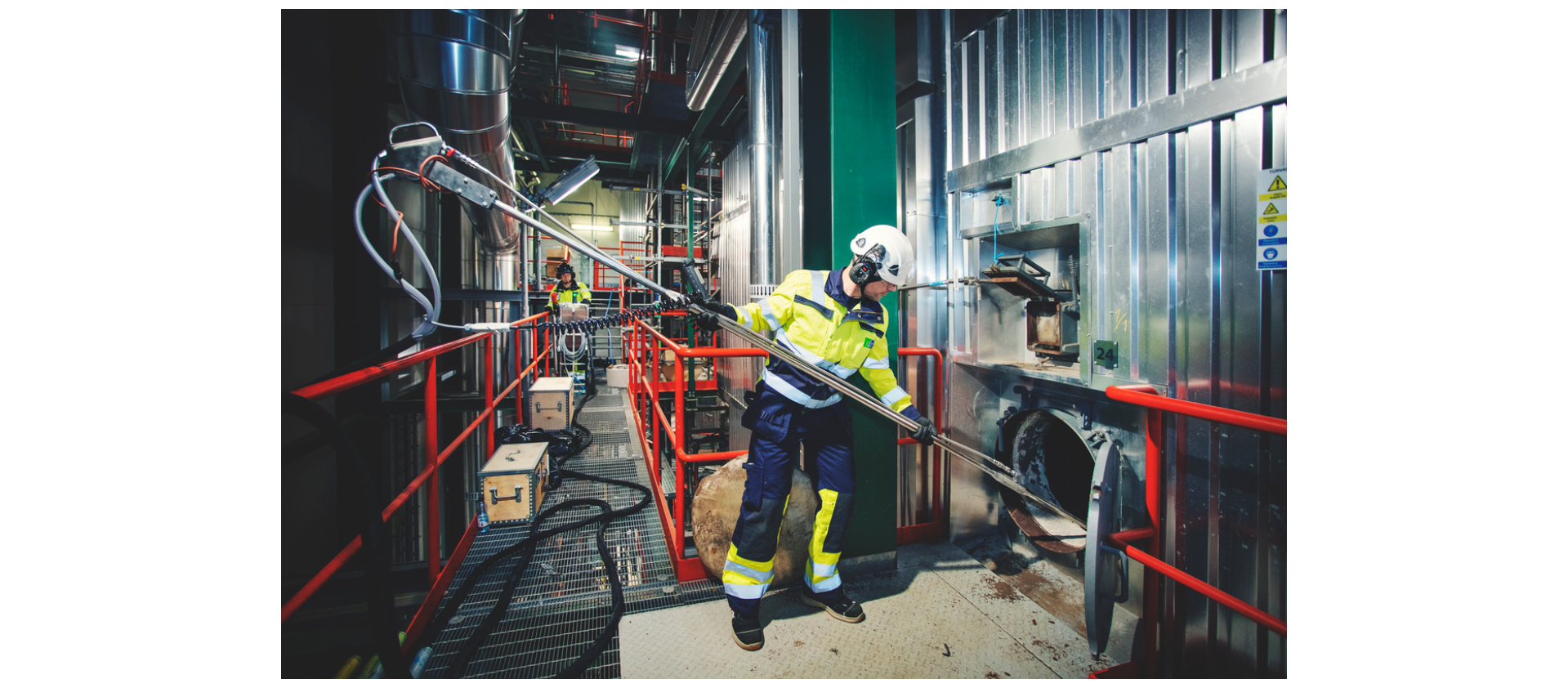L&T cleans industrial boilers with an effective technique that can be used safely and without disrupting processes.
Television adverts sometimes describe how a cleaning product will blast the dirt away. Whereas blasting the grime away is only a figure of speech when household cleaning is concerned, L&T’s blast cleaning technique is completely real. Blast cleaning is used for large boilers at industrial facilities such as power plants. Soot and ash accumulate in industrial boilers, reducing their efficiency.
In blast cleaning, a pressure wave blasts the soot and ash deposited in the boiler to make it fall out. It is a familiar technique at Finland’s power plants, but L&T Production Manager Hannu Honkasalo has developed the technique further to make it possible to use it safely at temperatures exceeding 1,000 °C. This means that the process does not need to be shut down during cleaning.
“The blast is not triggered until the operator approves it,” Honkasalo says, describing the safety aspects.
Safety through appropriate techniques
Even though L&T is currently focusing on blast cleaning, Honkasalo is already developing an even safer cleaning method based on compressed air. There are plans for both a mobile and a fixed device that release pressure shocks at the target at specified intervals.
Both techniques are used for the same types of equipment: recovery boilers, waste boilers and biomass boilers. L&T also uses blast cleaning for electrostatic precipitators, silos and flue gas ducts.
“The advantage of blast cleaning is that you can do it through a small opening. This means you don’t need to open the larger maintenance hatch, which improves safety. The cleaning can be completed quickly, bringing the boiler back to full load,” Honkasalo explains.
The person carrying out the blast cleaning process must hold a blasting licence, but that alone is not enough. In a large power plant, you need to know exactly what you are doing. In the worst case, a mistake in blast cleaning can damage the boiler and necessitate a shutdown of production.
“Experience is essential for risk avoidance. You need to be familiar with the blasting agent and the process of the boiler,” says Honkasalo, who has been been studying and using blasting techniques since 2013.
Experience is key in Kotka
Production Engineer Petri Jalkanen at Kotkan Energia’s Korkeakoski waste-to-energy plant is one of many professionals who rely on Honkasalo’s experience.
Each year, the plant incinerates 100,000 tonnes of household waste and waste from a cardboard plant to produce steam, district heating and electricity for industrial customers and households.
“The boiler is cleaned at intervals of 3–6 weeks. We mostly use L&T’s services for it,” Jalkanen says.
Blast cleaning at the Korkeakoski plant can be done during normal operation without lowering the output at all. Jalkanen is also satisfied with L&T’s services in a general sense.
“The availability of the service is very good, the boiler gets cleaned properly and L&T has a highly competent team that does the job safely.”
The boiler at the Kotka plant is cleaned frequently. According to L&T’s Honkasalo, it makes sense to take a proactive approach to cleaning boilers instead of cleaning them when the situation starts to be critical.
“The dirtier the boiler, the higher the risks,” Honkasalo concludes.


